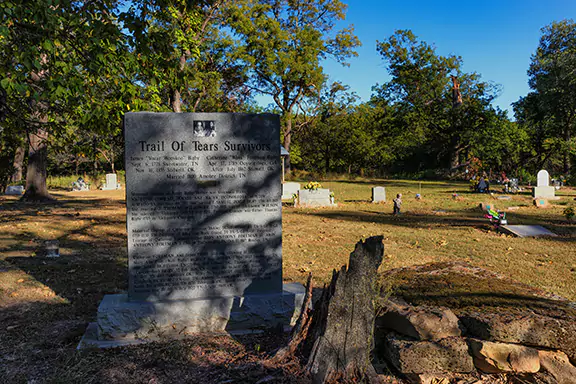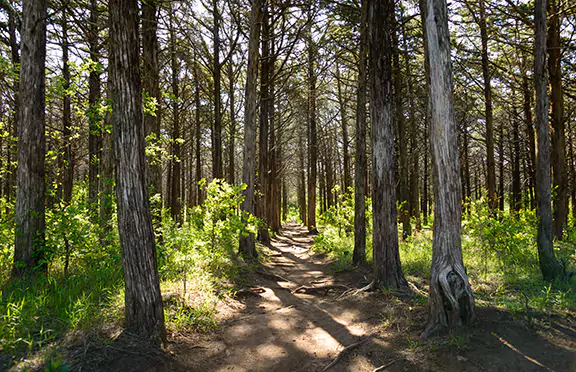Discovering the national parks in Oklahoma is a great way to connect with nature and explore the rich history of our state. From serene lakes and scenic trails to historic landmarks, Oklahoma’s national parks offer something for everyone.
Whether you’re looking for a peaceful spot to relax or an educational trip back in time, these parks provide a perfect escape. Let’s dive into some of the must-visit national parks in Oklahoma and learn how you can make the most of your visits.
1. Chickasaw National Recreation Area
Chickasaw National Recreation Area is a water lover’s paradise located in Sulphur, Oklahoma. Known for its beautiful springs, streams, and lakes, this park is ideal for a variety of recreational activities.
Features and Activities
Springs and Streams: The park is famous for its natural springs and streams, perfect for cooling off on a hot day.
Lakes: Enjoy boating, fishing, and swimming in the serene waters of the Lake of the Arbuckles.
Hiking Trails: Explore numerous hiking trails that offer stunning views and a chance to see local wildlife.
Tips for Visiting
Best Times to Visit: The park is open year-round, but spring and fall offer the most comfortable weather for outdoor activities.
Must-See Spots: Don’t miss Little Niagara, a popular swimming hole, and Rock Creek, a beautiful spot for wading.
Amenities: The park offers campgrounds, picnic areas, and the Travertine Nature Center, which provides educational exhibits about the park’s natural features.
2. Oklahoma City National Memorial
The Oklahoma City National Memorial is a place of quiet reflection and remembrance, honoring the victims, survivors, and rescuers of the tragic bombing on April 19, 1995. Located in the heart of Oklahoma City, this site preserves the memory of the 168 people who lost their lives and stands as a testament to the resilience of the community.
Overview and Significance
Outdoor Symbolic Memorial: The outdoor memorial includes the Reflecting Pool, the Field of Empty Chairs, and the Survivor Tree. Each element symbolizes different aspects of the tragedy and the strength of those affected.
Museum: The Oklahoma City National Memorial Museum provides a detailed account of the events leading up to the bombing, the aftermath, and the ongoing impact on the community.
Visiting Tips
Hours of Operation: The outdoor symbolic memorial is open 24 hours a day, seven days a week. The museum is open Monday through Saturday from 9 AM to 6 PM and Sunday from 12 PM to 6 PM.
Entry Fees: There is no fee to visit the outdoor memorial, but there is an admission fee for the museum. Discounts are available for seniors, students, and military personnel.
Respectful Behavior: When visiting, remember to be respectful. The memorial is a place of reflection, and maintaining a quiet and contemplative demeanor is important.
3. Fort Smith National Historic Site
Fort Smith National Historic Site, located on the border of Oklahoma and Arkansas, provides a fascinating glimpse into the past. This site covers almost 80 years of history, from the establishment of the first fort in 1817 to the final days of Judge Isaac Parker’s jurisdiction over Indian Territory in 1896.
Historical Importance
Military Barracks and Courthouse: The site includes well-preserved military barracks and the courthouse of Judge Isaac C. Parker, famously known as the “Hanging Judge” of the American Old West.
Trail of Tears: Fort Smith played a crucial role during the Trail of Tears, serving as a point of transition for many Native Americans forced to relocate to Indian Territory.
Visitor Information
Hours: The site is open daily from 9 AM to 5 PM.
Address: 301 Parker Avenue, Fort Smith, AR 72901.
Key Exhibits: Explore exhibits that detail the life of soldiers, outlaws, and lawmen, as well as the broader history of Indian Territory during the 19th century.
4. Santa Fe National Historic Trail
The Santa Fe National Historic Trail is a route rich in history, stretching from western Missouri to Santa Fe, New Mexico. This trail played a pivotal role in the westward expansion of the United States, facilitating trade and travel across the frontier.
Historical Context
Role in Westward Expansion: The trail was a major commercial route used by traders and settlers moving west. It connected the Midwest to the Southwest, allowing for the exchange of goods and cultural influences.
Oklahoma’s Portion: Although Oklahoma has the shortest stretch of the trail, it features significant sites and landmarks that provide insight into the trail’s history.
Exploring the Trail
Key Sites: Visit notable spots like Autograph Rock Historic District and other markers that tell the story of the trail and its travelers.
Activities: Many visitors enjoy hiking parts of the trail, exploring historical markers, and taking guided tours to learn more about its history.

5. Trail of Tears National Historic Trail
The Trail of Tears National Historic Trail commemorates the forced removal of the Cherokee people from their homelands in Georgia, Alabama, and Tennessee to Indian Territory, now known as Oklahoma. This tragic event in American history is a vital part of understanding the resilience and survival of the Cherokee people.
Commemoration and History
Forced Removal: Between 1838 and 1839, the Cherokee were forced to travel by foot, horse, wagon, or steamboat to their new home in Indian Territory. This trail marks the route they took and the hardships they endured.
Historical Markers: Throughout Oklahoma, you can find historical markers and interpretive centers that tell the story of the Trail of Tears and honor the strength of the Cherokee people.
Key Sites in Oklahoma
Sequoyah’s Cabin: Visit this historic site to learn more about Sequoyah, the Cherokee man who created the Cherokee syllabary, making reading and writing in Cherokee possible.
Honey Springs Battlefield: Another significant site where you can learn about the broader impacts of the Trail of Tears on the region.
6. Washita Battlefield National Historic Site
Washita Battlefield National Historic Site in Cheyenne, Oklahoma, is a place of remembrance for a tragic clash between the U.S. Army and the Cheyenne people. On November 27, 1868, Lt. Colonel George Armstrong Custer led a surprise dawn attack on a Cheyenne village led by Peace Chief Black Kettle.
Historical Significance
Surprise Attack: The attack resulted in the death of Chief Black Kettle and many Cheyenne women and children. This event highlights the tragic consequences of the Great Plains Wars.
Reflection and Remembrance: The site is dedicated to those who lost their lives and serves as a place for visitors to reflect on this dark chapter in American history.
Visitor Information
Hours: The site is open daily from 8 AM to 4:30 PM.
Address: 18555 Hwy 47A Ste. A, Cheyenne, OK 73628.
Key Exhibits: The visitor center features exhibits that delve into the details of the battle and its broader historical context.
Free Access to Parks with Museums4All.org
Did you know that you can get free access to national parks in Oklahoma with your SNAP card through Museums4All.org? This fantastic program allows families receiving SNAP benefits to visit museums and parks at no cost, making it easier to enjoy educational and recreational activities.
How to Get Free Access
Eligibility: Simply present your SNAP card at participating locations to receive free or reduced admission.
Participating Locations: Many national parks and museums in Oklahoma participate in this program. Use the park locator to see which locations participate.
EASY Wireless Offer for SNAP Participants
If you qualify for SNAP benefits and other government assistance programs, you may also be eligible for FREE Cell Phone and Data service with EASY Wireless through the Lifeline program.
Visit an Oklahoma EASY Wireless store today and let one of our customer service representatives help you enroll today!
Go Out and Visit the Wonders of Oklahoma National Parks
Exploring the national parks in Oklahoma is a wonderful way to connect with nature and history. By using resources like Museums4All.org and EASY Wireless, you can make these experiences even more accessible and enriching. So, get out there and enjoy all that Oklahoma’s national parks have to offer!
Click to see if you’re eligible for FREE Cell Phone Service from EASY Wireless.


